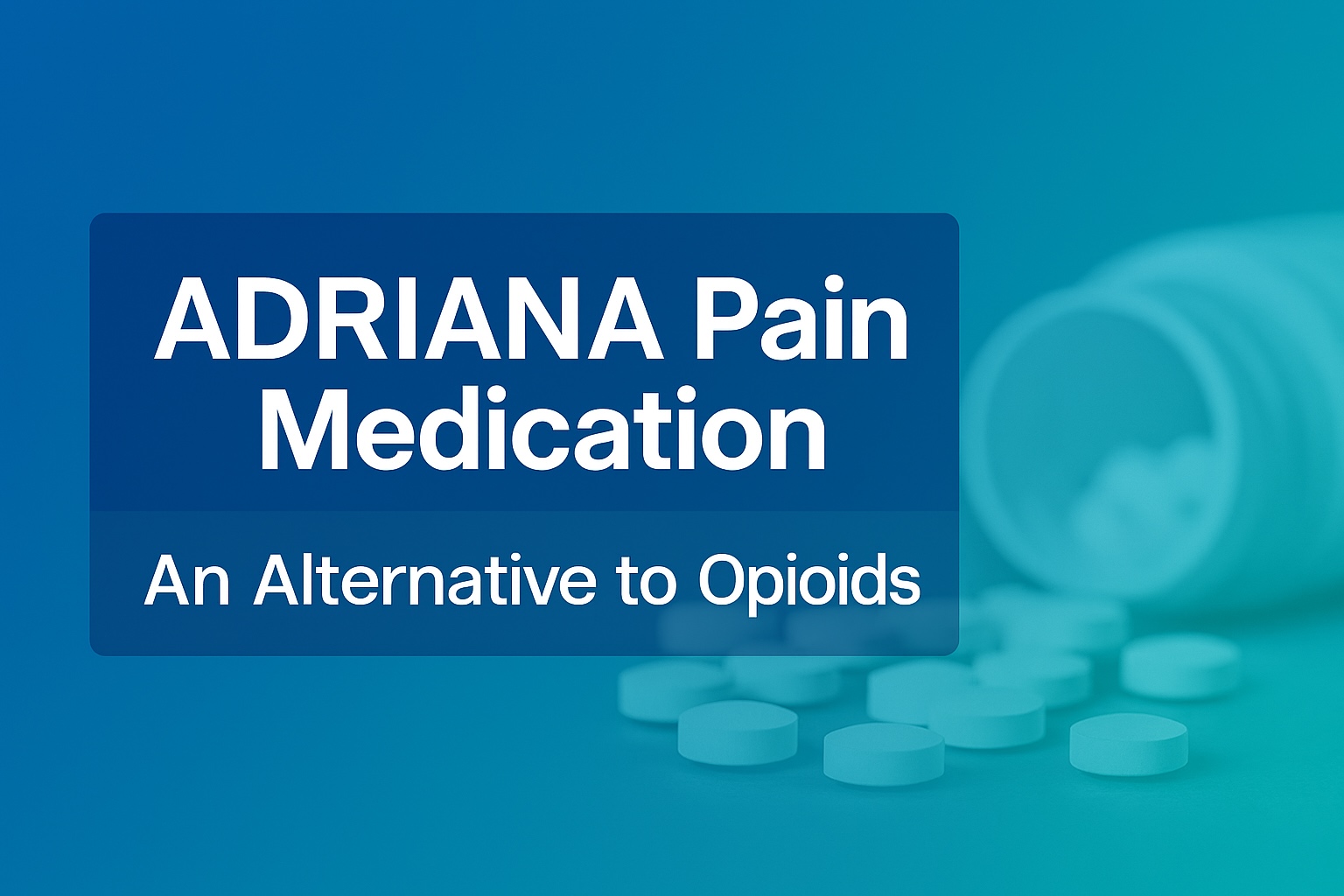The opioid crisis has devastated communities worldwide, particularly in the United States, where opioid overdoses claimed more than 80,000 lives in 2023 alone.¹ While opioids like morphine and oxycodone remain powerful tools for managing severe pain, their risks —including addiction, overdose, and long-term dependence — have created an urgent need for safer alternatives.
Enter ADRIANA pain medication, a groundbreaking discovery from researchers at Kyoto University. This novel analgesic could transform pain management by offering effective relief without the dangerous side effects associated with opioids.²
In this article, we’ll explore how ADRIANA works, how it compares to opioids, the societal costs of opioid misuse, and why this new medication could be a game-changer for global public health.
What Is ADRIANA Pain Medication?
ADRIANA is a non-opioid analgesic currently in clinical development by Kyoto University in collaboration with BTB Therapeutics. Unlike opioids, which act directly on the brain’s opioid receptors, ADRIANA works through a completely different biological pathway.²
Researchers discovered that ADRIANA selectively blocks α2B-adrenoceptors, a subtype of receptors involved in regulating noradrenaline levels. By blocking these receptors, ADRIANA increases noradrenaline activity, which then activates α2A-adrenoceptors — a mechanism that naturally suppresses pain without causing the cardiovascular instability seen in earlier noradrenaline-based treatments.²
This unique mechanism means ADRIANA could provide strong pain relief without the risks of respiratory depression, addiction, or overdose that plague opioid medications.
How ADRIANA Differs from Opioids
| Feature | Opioids (e.g., Morphine, Oxycodone) | ADRIANA Pain Medication |
| Mechanism of Action | Binds to opioid receptors in the brain and spinal cord to block pain signals | Blocks α2B-adrenoceptors, boosting noradrenaline and activating α2A-adrenoceptors for pain relief |
| Addiction Risk | High — opioids trigger dopamine release, reinforcing dependence³ | Low — does not act on opioid receptors or dopamine pathways² |
| Overdose Risk | High — respiratory depression is the leading cause of opioid overdose deaths³ | Minimal — no evidence of respiratory suppression in early trials² |
| Side Effects | Constipation, nausea, sedation, tolerance, dependence³ | Early trials show fewer systemic side effects² |
| Regulatory Concerns | Strictly controlled due to abuse potential | Still in clinical trials; potential for broader accessibility if proven safe² |
Experiencing Side Effects?
Let’s Rethink Your Meds.
Explore treatment options that may work better for your body – with fewer side effects and lower costs. It’s fast, free, and tailored to you. Learn More →
The Opioid Crisis: A Global Health Emergency
To understand why ADRIANA is so promising, it’s important to look at the scale of the opioid problem:
- In the United States, opioid overdoses killed over 80,000 people in 2023,¹ making it one of the leading causes of accidental death.
- The economic burden of prescription opioid misuse in the U.S. is estimated at $78.5 billion annually, including healthcare, lost productivity, addiction treatment, and criminal justice costs.⁴
- Globally, synthetic opioids like fentanyl are driving a surge in overdose deaths, with fentanyl being 50 to 100 times more potent than morphine.⁵
- Patients who develop opioid dependence often face long-term health consequences, including increased risk of infectious diseases, mental health disorders, and reduced life expectancy.³
These staggering statistics highlight the urgent need for non-addictive alternatives like ADRIANA.
Why ADRIANA Pain Medication Is So Promising
- Non-Addictive Mechanism – ADRIANA does not interact with opioid receptors, meaning it avoids the dopamine-driven reinforcement cycle that makes opioids so addictive.²
- Early Clinical Success – Kyoto University’s Phase I and Phase II trials showed positive results in both healthy volunteers and patients recovering from lung cancer surgery, with effective pain relief and fewer side effects.²
- Potential to Reduce Opioid Prescriptions – If ADRIANA becomes widely available, it could significantly reduce reliance on opioids for post-surgical and chronic pain management, lowering the risk of new cases of opioid dependence.
- Global Public Health Impact – By offering a safer alternative, ADRIANA could play a critical role in addressing the opioid crisis, particularly in countries like the U.S. where opioid misuse remains a national emergency.²
The Future of Pain Management
ADRIANA is currently preparing for large-scale Phase II clinical trials in the United States, a crucial step toward regulatory approval.² If successful, it could become the first non-opioid analgesic developed in Japan to achieve global adoption.
Experts believe ADRIANA could be used across a wide range of pain conditions, from postoperative pain to chronic illnesses, offering millions of patients relief without the risks of addiction or overdose.
Sources (5)
- National Institute on Drug Abuse (NIDA). Overdose Death Rates.
- Kyoto University. A new alternative to opioids: Discovery of ADRIANA pain medication.
- Centers for Disease Control and Prevention (CDC). Understanding the Epidemic.
- National Center for Injury Prevention and Control. Economic Burden of Prescription Opioid Misuse in the United States.
- U.S. Drug Enforcement Administration (DEA). Fentanyl Facts.


